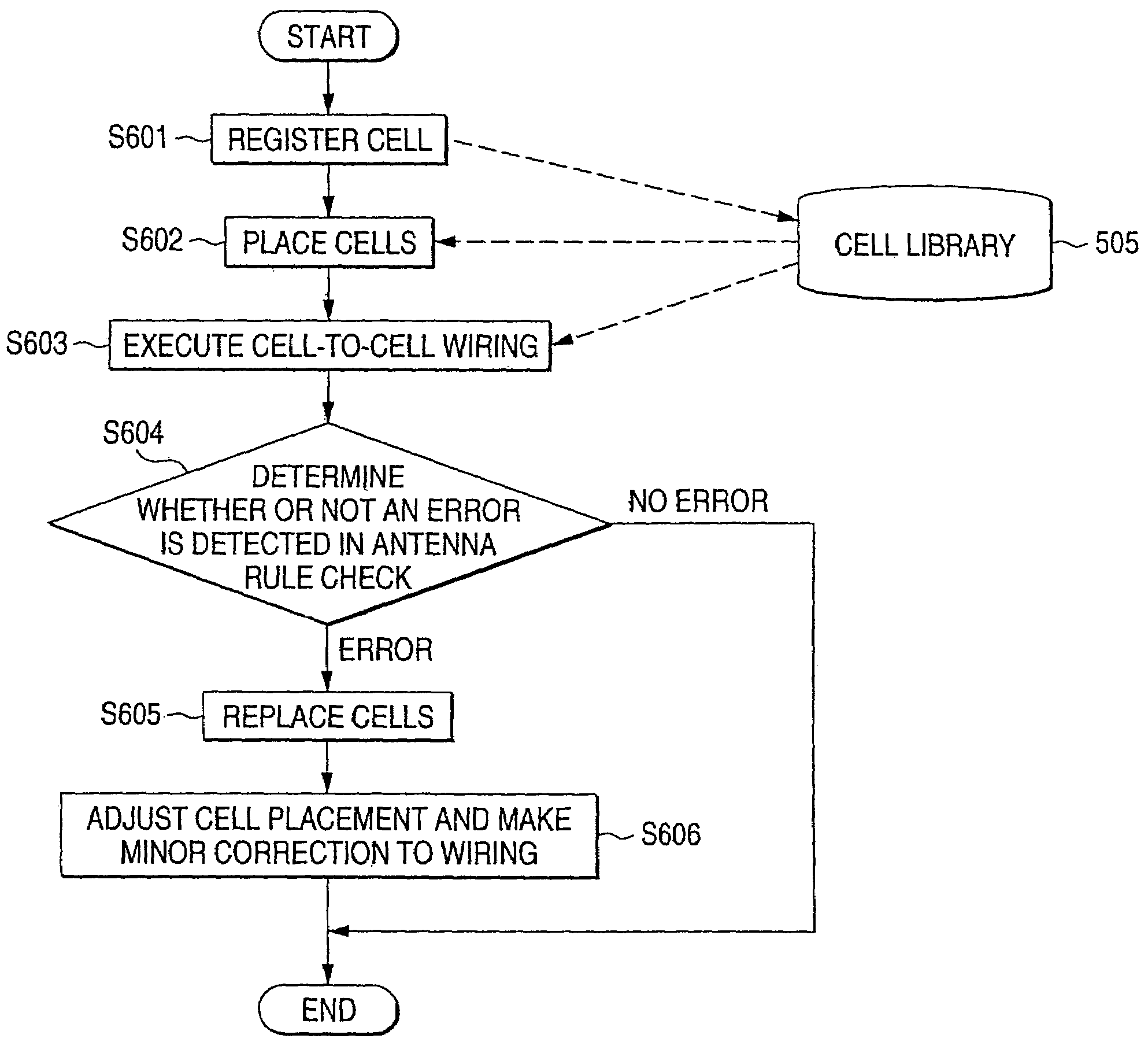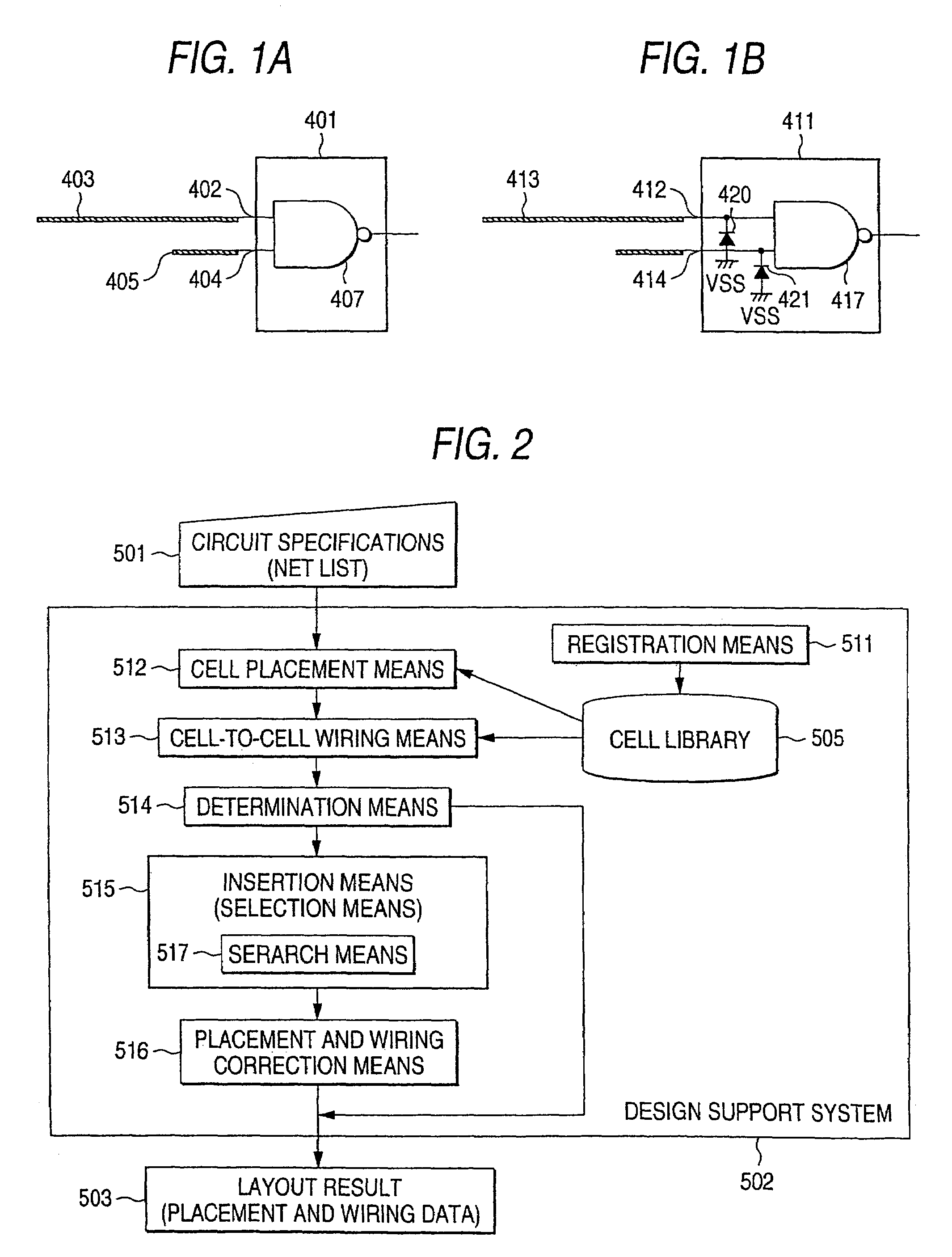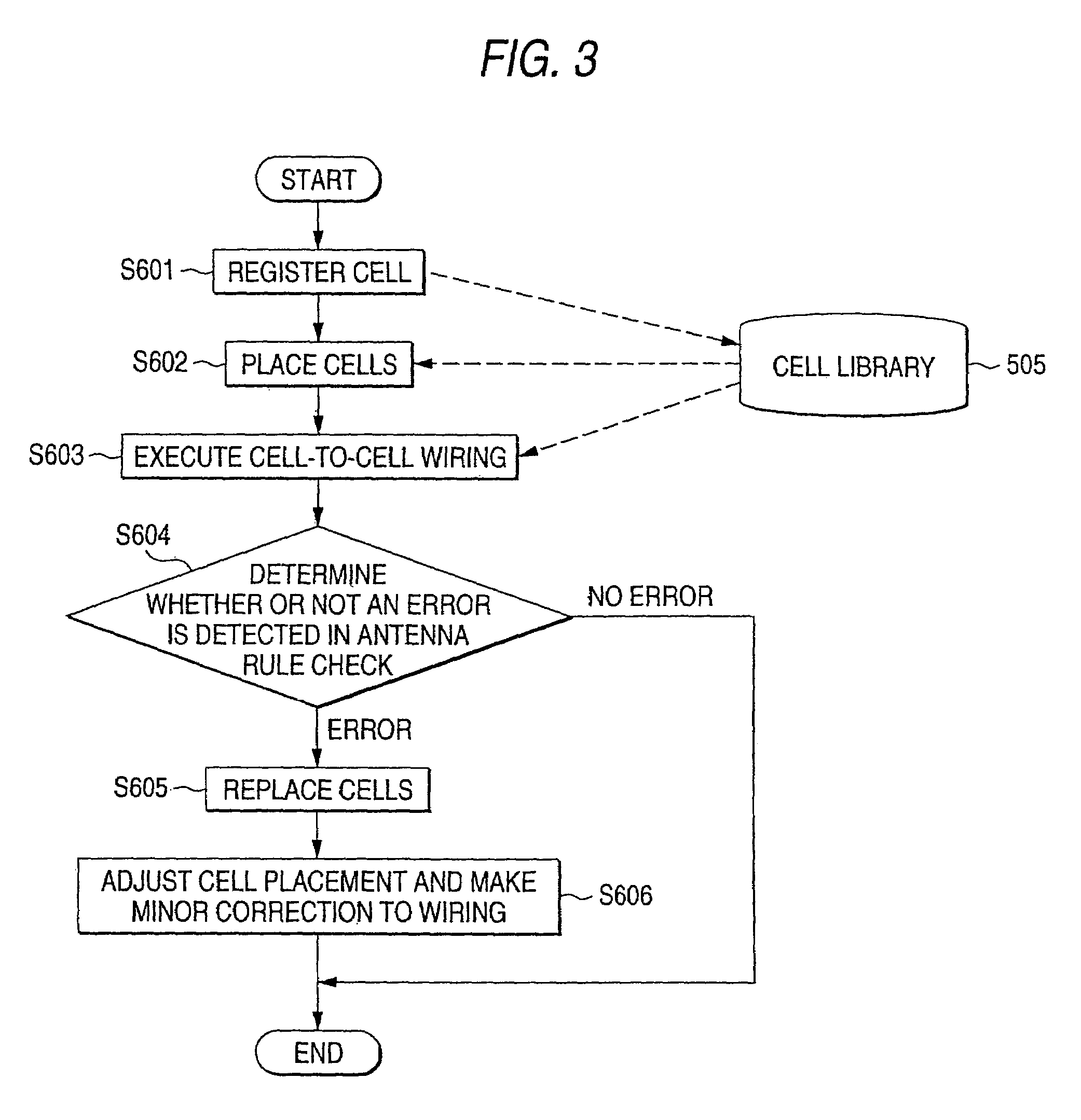Semiconductor device, semiconductor device design method, semiconductor device design method recording medium, and semiconductor device design support system
a semiconductor device and design method technology, applied in computer aided design, program control, instruments, etc., can solve the problems of gate oxide film damage, gate oxide film pressure resistance significantly reduced, and change in transistor characteristics, so as to prevent antenna damage
- Summary
- Abstract
- Description
- Claims
- Application Information
AI Technical Summary
Benefits of technology
Problems solved by technology
Method used
Image
Examples
first embodiment
[0073]Next, a semiconductor device, a semiconductor device design support system, and a semiconductor device design method according to a first embodiment will be discussed with reference to FIGS. 1 to 3. FIGS. 1A and 2B are schematic diagrams to conceptually describe a layout of the semiconductor device of the first embodiment. FIG. 2 is a block diagram of the semiconductor device design support system of the first embodiment. FIG. 3 is a flowchart to describe the semiconductor device design method of the first embodiment.
[0074]The embodiment is characterized by the fact that first-kind cells each comprising an n+ diffusion layer-P well type protection diode (or a p+ diffusion layer-N well type antenna protection diode; for the structures of the diodes, see FIGS. 17A and 16B) connected to an input pin for preventing antenna damage or an antenna rule error from occurring and second-kind cells each not containing the protection diode and having the same logic as and the same drive ca...
third embodiment
[0091]Next, a semiconductor device, a semiconductor device design support system, and a semiconductor device design method according to a third embodiment will be discussed with reference to FIG. 15. FIG. 15 is a schematic diagram to conceptually describe a layout of the semiconductor device of the fourth embodiment.
[0092]In FIG. 15, parts (a) and (b) are schematic diagrams to show a state in which an unused input pin of an inverter 2041 is connected to a power supply trunk and potential is fixed. The part (a) is a plan schematic diagram viewed from above the semiconductor device and the part (b) is a sectional schematic diagram taken on line A–A′ in the part (a). In FIG. 15, the unused input pin of the inverter 2041 is connected via first metal wiring 2015 to a second metal power supply trunk 2021 (2022) and potential is fixed. The second metal power supply trunk 2021 (2022) is connected to a third metal power supply trunk 2031. The second metal power supply trunk 2021 indicates wi...
fourth embodiment
[0095]Next, a semiconductor device, a semiconductor device design support system, and a semiconductor device design method according to a fourth embodiment will be discussed with reference to FIGS. 6A to 6D. FIGS. 6A to 6D are schematic diagrams to conceptually describe a layout of the semiconductor device of the fifth embodiment.
[0096]The embodiment is characterized by the fact that when it is assumed that the ratio between the area of a wiring conductor conducting to a gate electrode and the area of the gate electrode is an antenna ratio, each wiring conductor conducting to a gate electrode in each wiring layer is limited to the area or wiring length as an antenna ratio of less than a half the allowed antenna ratio in the semiconductor device and is divided into at least three parts for wiring.
[0097]The semiconductor device of the embodiment will be discussed with reference to the schematic diagrams of FIGS. 6A to 6D. FIG. 6A schematically shows a wiring layout of metal wiring 902...
PUM
 Login to View More
Login to View More Abstract
Description
Claims
Application Information
 Login to View More
Login to View More - R&D
- Intellectual Property
- Life Sciences
- Materials
- Tech Scout
- Unparalleled Data Quality
- Higher Quality Content
- 60% Fewer Hallucinations
Browse by: Latest US Patents, China's latest patents, Technical Efficacy Thesaurus, Application Domain, Technology Topic, Popular Technical Reports.
© 2025 PatSnap. All rights reserved.Legal|Privacy policy|Modern Slavery Act Transparency Statement|Sitemap|About US| Contact US: help@patsnap.com



